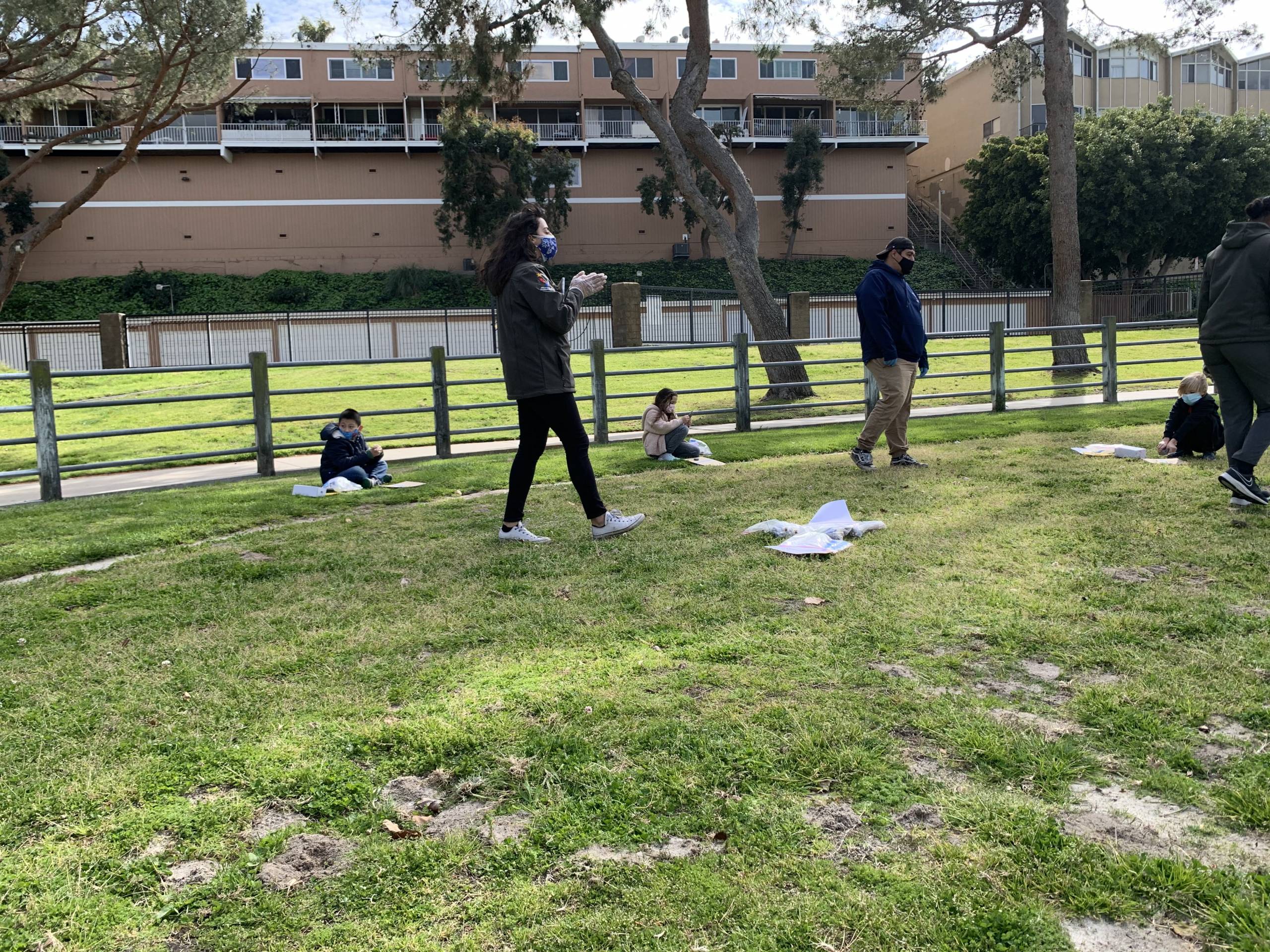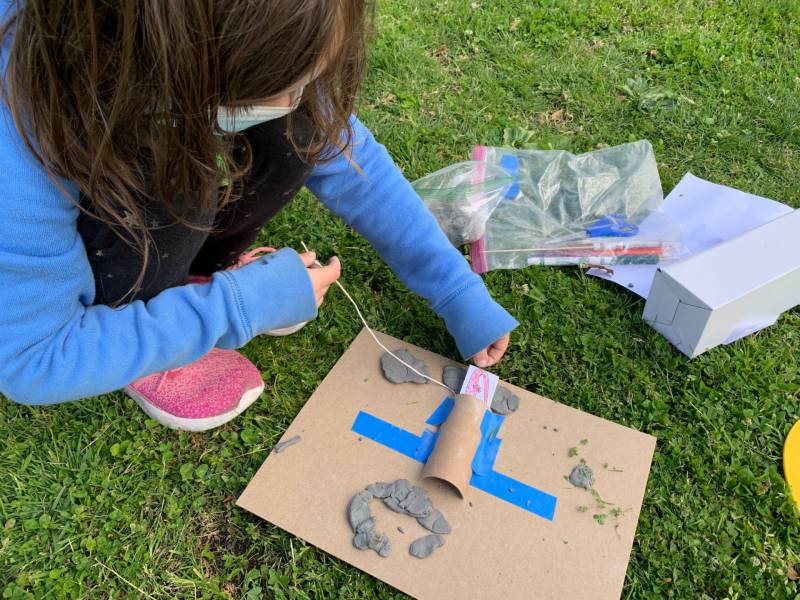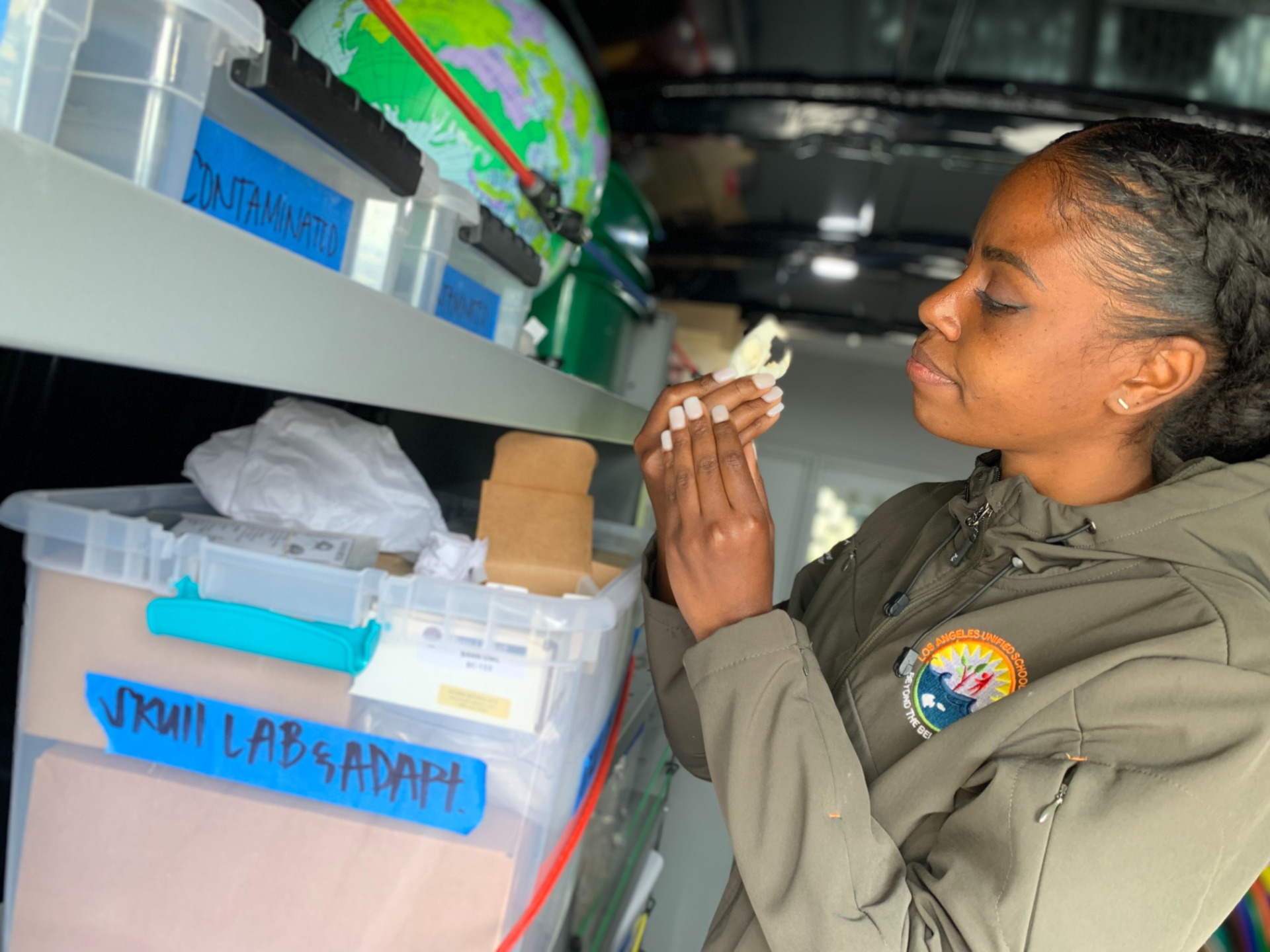It’s an experience most children have not had in a year.
Eleven sets of eager eyes are fixed on the teacher who holds court in the center of the circle, storybook in hand and props at the ready. Each child has a ziplock bag packed with supplies: duct tape, plasticine, pipe cleaners, scissors, string and more. The children are about to build a river and forest ecosystem model. And there’s a tricky catch — they can’t let their paper salamander perish. Their excitement is palpable.
These Los Angeles Unified School District first to fifth graders are spaced 6 feet apart on the grass of an L.A. city park. Some kids sit, some crouch and one little boy spins about in place. The children have left behind their computers in the Parks and Rec building, where they’ve spent the morning doing virtual instruction with their classroom teachers. Now they are participating in a program run by the district’s Office of Outdoor and Environmental Education. The little students seem thrilled to be discussing salamanders.
“We’re covering ecosystems,” said Ashley Storey, one of the program’s outdoor educators. The students “have to come up with a way for a salamander to cross between its two habitats, a river-dwelling and a forest-dwelling, without getting hit by a car.”
Hands-on learning like this has been all but impossible during the pandemic, and despite herculean efforts by teachers to adapt their curriculums for Zoom, virtual education hasn’t worked for many children. “We know that learning loss is real during this pandemic,” said Gerry Salazar, who runs outdoor education for the district.

A national study found the educational slide has been widespread as children log in to school from home. Zoom school just isn’t providing what all kids need, and children of color are falling further behind their white peers. It is hoped that the return to in-person schooling will help children catch up, yet even in hybrid learning, most students will still be zooming with their teachers for some portion of the day. The problem is acute for the youngest students because hands-on learning has been almost impossible in the virtual environment.


